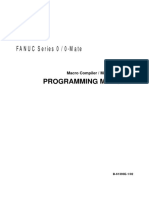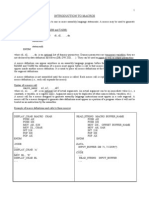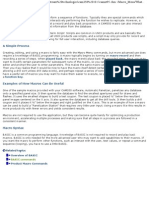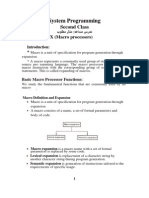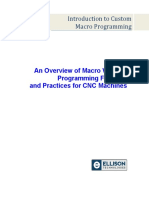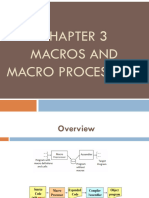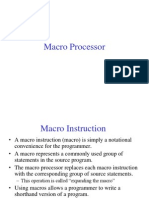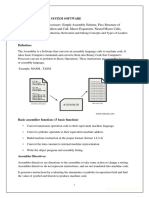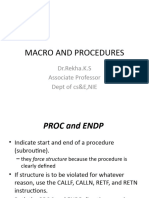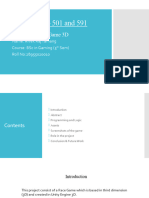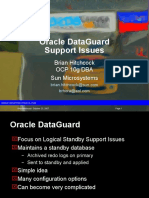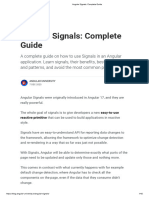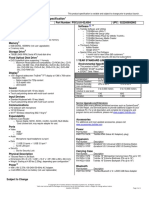0% found this document useful (0 votes)
50 views10 pagesMACRO Instructions
This document discusses macros for automated production systems. A macro is a sequence of instructions that acts as a single command and can be called from another program. Macros can be executed by a user input or signal. The controller can have up to 20 macros. To create a macro, a normal program is first developed using the teach pendant and then registered as a macro. Macros can then be assigned to inputs like user keys to launch the sequence of instructions when activated.
Uploaded by
Renato TavaresCopyright
© © All Rights Reserved
We take content rights seriously. If you suspect this is your content, claim it here.
Available Formats
Download as PDF, TXT or read online on Scribd
0% found this document useful (0 votes)
50 views10 pagesMACRO Instructions
This document discusses macros for automated production systems. A macro is a sequence of instructions that acts as a single command and can be called from another program. Macros can be executed by a user input or signal. The controller can have up to 20 macros. To create a macro, a normal program is first developed using the teach pendant and then registered as a macro. Macros can then be assigned to inputs like user keys to launch the sequence of instructions when activated.
Uploaded by
Renato TavaresCopyright
© © All Rights Reserved
We take content rights seriously. If you suspect this is your content, claim it here.
Available Formats
Download as PDF, TXT or read online on Scribd
/ 10



